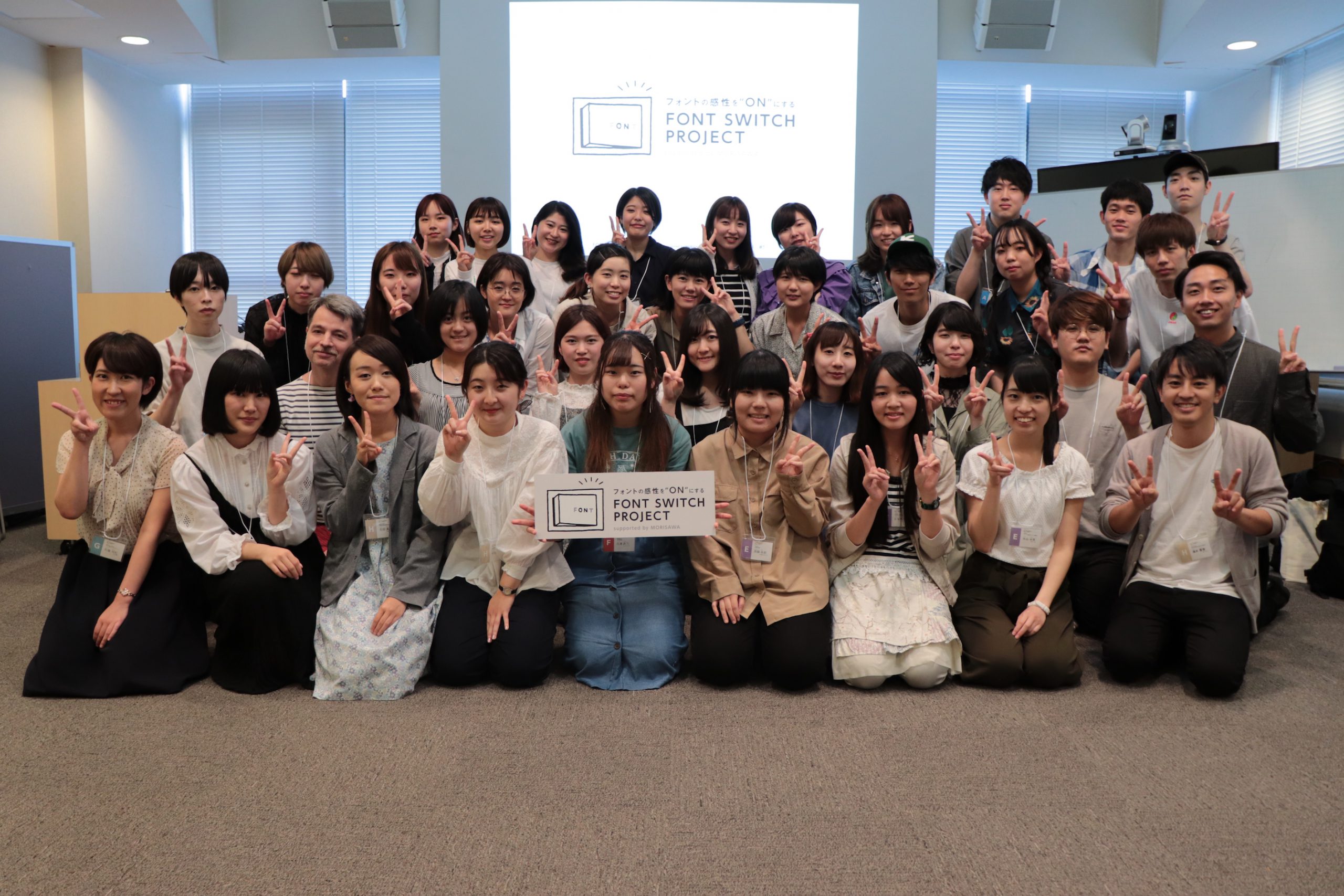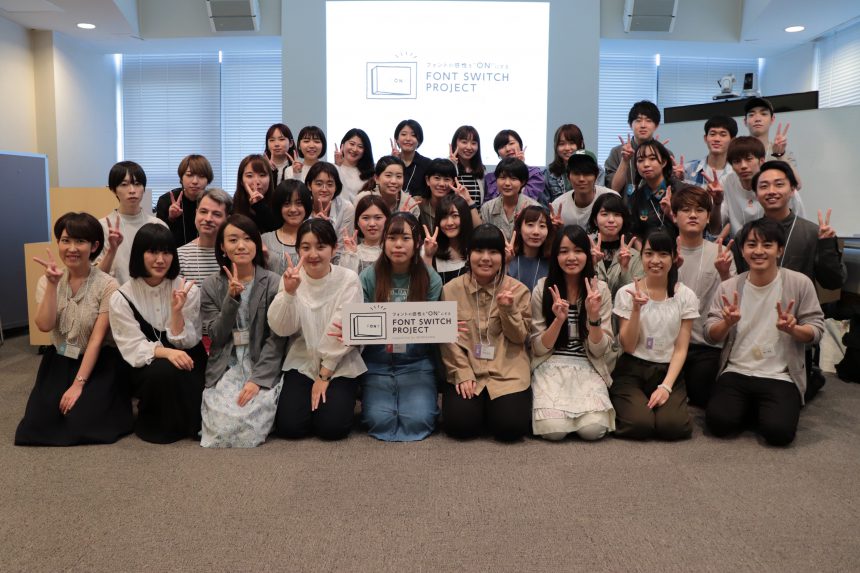
On June 16th, the 4th Moripass Club began on the 9th floor of Morisawa's Tokyo headquarters in Iidabashi. For 2019, the club has been revamped to allow members to better demonstrate their expressive abilities. Here's a close-up report on the members who participated in the first club meeting!
Members who have a deep understanding of fonts and change their expressions
Ten minutes before the meeting began, the members gathered in their seats with nervous looks on their faces, and Moripass Club advisor Hashizume gave them a few words to ease their tension.
"When it gets tough, keep moving your body. Let's make it an effort that will make you think, 'I did my best!' on the last day."
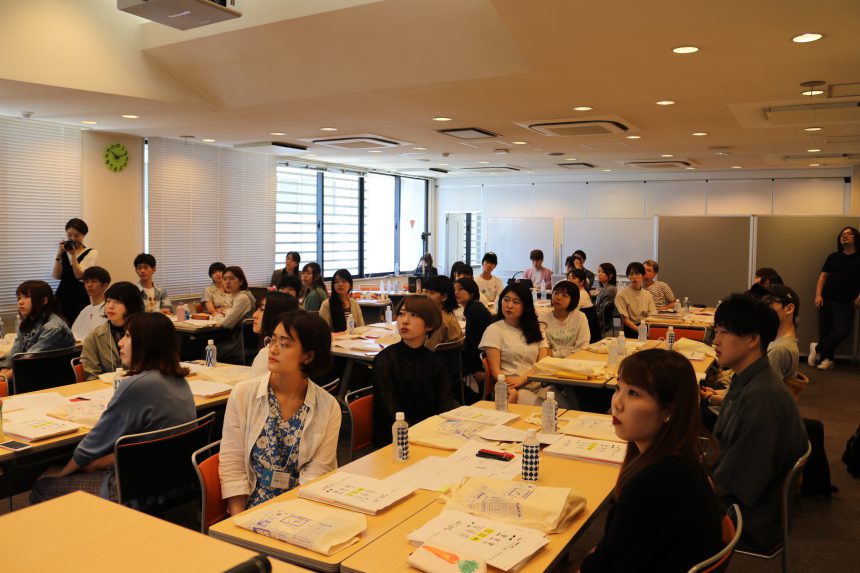
After the members had relaxed a little, Advisor Hashizume gave an explanation about this year's Moripass Club activities and the FONT SWITCH PROJECT.
"Our goal is to convey the appeal of fonts to as many other students as possible so that they will want to study in the same font environment as professionals. To do that, it's important to first learn about fonts, right?"
Group work has begun with the aim of completing 8 different zines!
The biggest change in the fourth Moripass Club was the introduction of the "Moji no ZINE" program, in which 35 students were divided into eight teams and each team produced a zine based on a theme selected from four themes.
"The key is to make use of the differences between the members who have come together from various schools. If each person volunteers to play a role, I think they will really feel like they are running a project as a team. Then, let's set the goal of the FONT SWITCH PROJECT as a problem, and with solving that as our mission, let's think about what we can express. Today, let's work on creating a concept and plan for a zine that will help solve that problem." (Advisor Hashizume)

As some members will be working on a project for the first time, the support system will be more robust for the fourth term. Professional companies related to editing and printing will hold seminars. On this day's meeting, a seminar on "Editing and Design" by CINRA Inc. and a lecture on "Paper and Processing" by Hokaze Inc. were scheduled.
In order to fully absorb the seminars and lectures that began in the afternoon, the eight teams immediately began group work to solidify the concepts for their zines. They brought together the planning sheets they had completed as homework beforehand and began creating concepts for their zines.
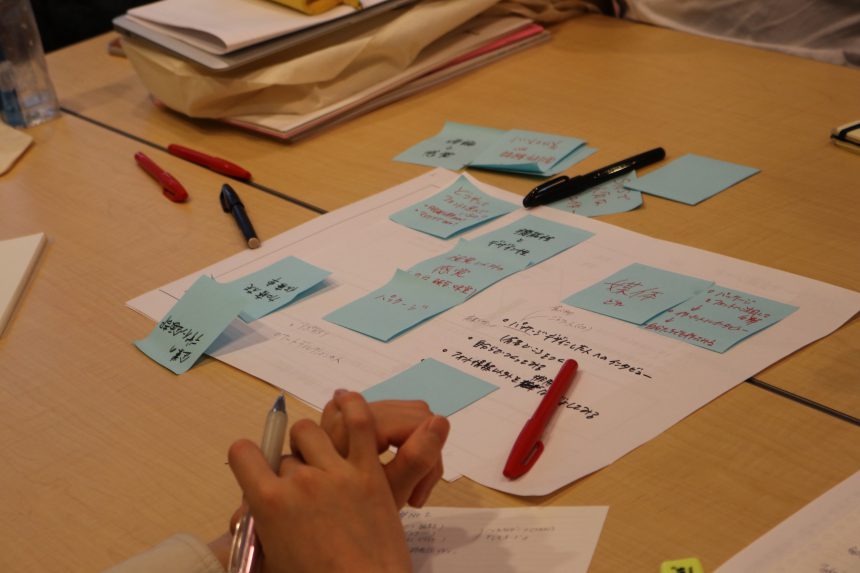
Deepen your knowledge through seminars by editing and design professionals
After solidifying the concept in just over an hour, including a lunch meeting, the members first attended an "Editing and Design" seminar hosted by CINRA. Although about half of the members were art students, creating a professional magazine was a completely unknown world to them.
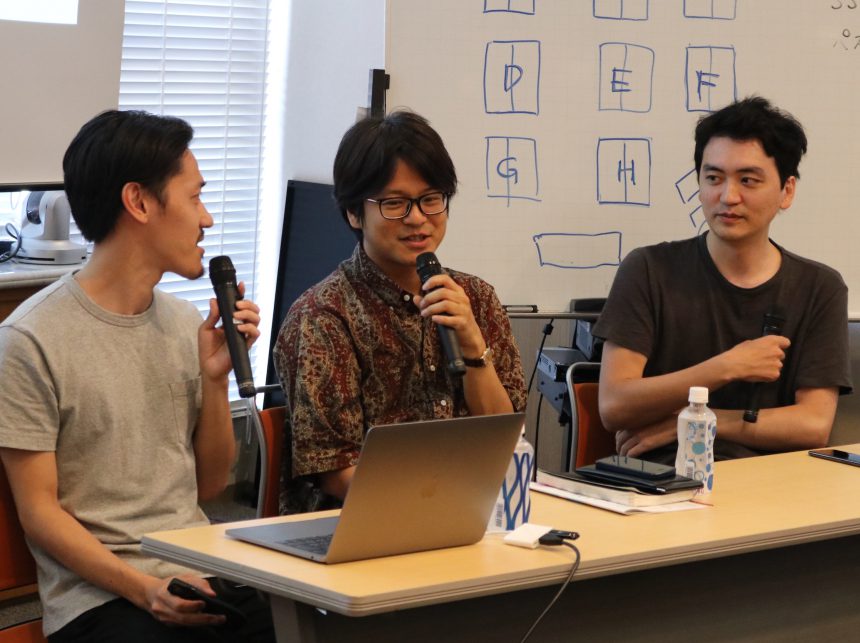
He came as a lecturer,cinra.net" editor Takeshi Kuno, designer Takafumi Shinozawa, and the design team "ampersandsThe members were naturally drawn into the seminar by designer Keisuke Nakamura.
The seminar, which lasts just over an hour, will explain how a magazine is made, step by step, from concept creation, planning, scheduling and budgeting, rough drafts, interviewing, photography, design, proofreading, editing, submission and printing, until the magazine is finally complete.
It is said that it is important to solidify this process as thoroughly as possible at the beginning. There are three things that are important in the concept-making process, which overlaps with the group work that day.
1. Purpose of the booklet
2. Target
3. Message you want to convey
"It's very important to keep the concept in mind so that you don't get confused later on about what you were making," says Kuno.
"Once we've come up with a concept, the next step is to think about the plan and format. Previously, when we took over the production of a booklet aimed at overseas tourists introducing the charms of Omotesando and Harajuku, we renamed the booklet 'MORE GUIDE' to match the concept. We wanted to make it clear that this booklet provides more in-depth information than the travel booklets that overseas tourists usually have," says Nakamura.
When we think about the Moripass Club based on this story, we can see that the key point is to create a concept that satisfies both the FONT SWITCH PROJECT's challenges and the interests of other students. However, when we think about valuing the individuality of each member, there seems to be another thing we should keep in mind.
"It's good to always find new motivation as you go through each process. Finding something that you enjoy will lead to good results," says Shinozawa.
The members came up with a zine project proposal that reflected their individuality.
After the "Editing and Design" seminar,HokazeAfter listening to a lecture on "paper" by Mr.Takeo Co., Ltd.You can choose from 21 varieties offered by
Then, you can choose from five processing methods, including irregular sizes and saddle stitching, to finish your zine.
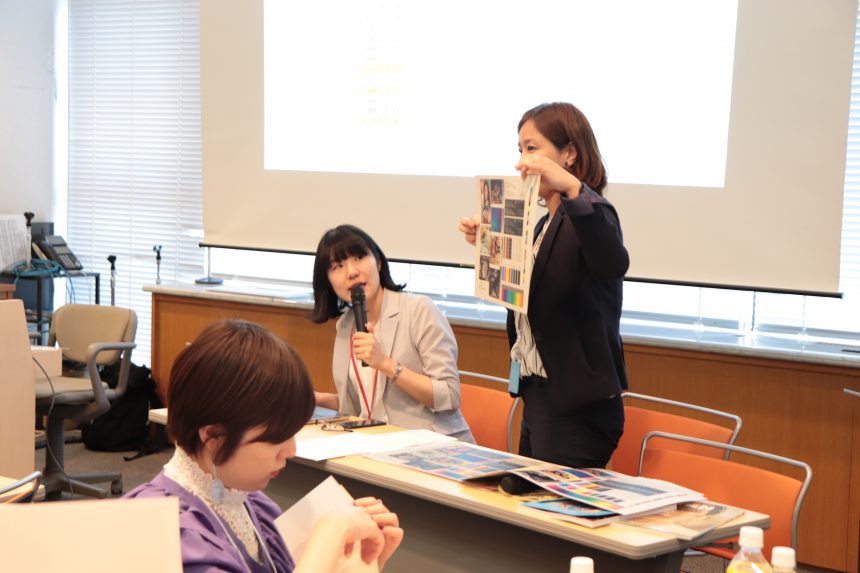
What kind of output is best suited to the zine they are creating? They will consider the characteristics of the paper, processing, and binding, and will then organize the content they have brushed up based on the tips they learned in the "Editing and Design" seminar into a planning sheet. The final session of the first workshop will be a presentation by each team on their zine plan.
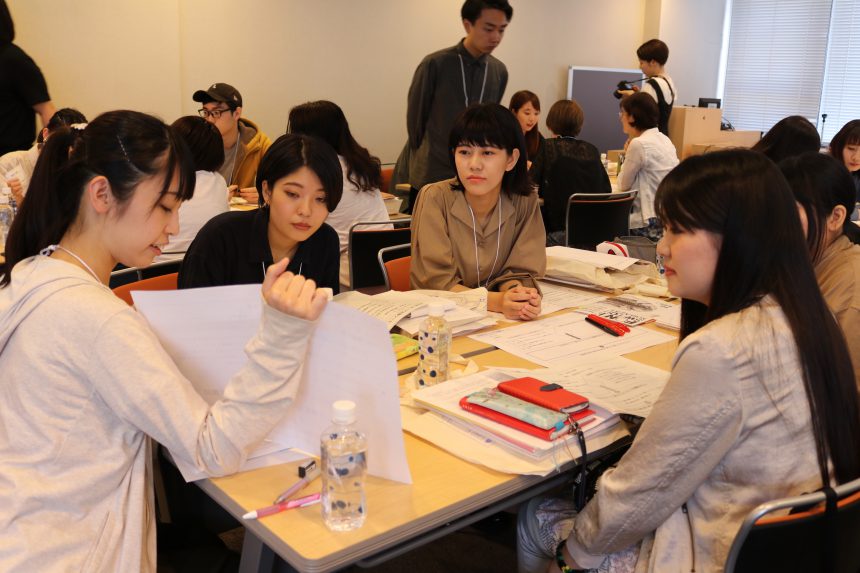
The eight teams will be divided into four themes to come up with plans based on: "Digging into how fonts are made," "Digging into creators who are skilled at using fonts," "Digging into expressions using fonts," and "Digging into the history and characteristics of fonts themselves."
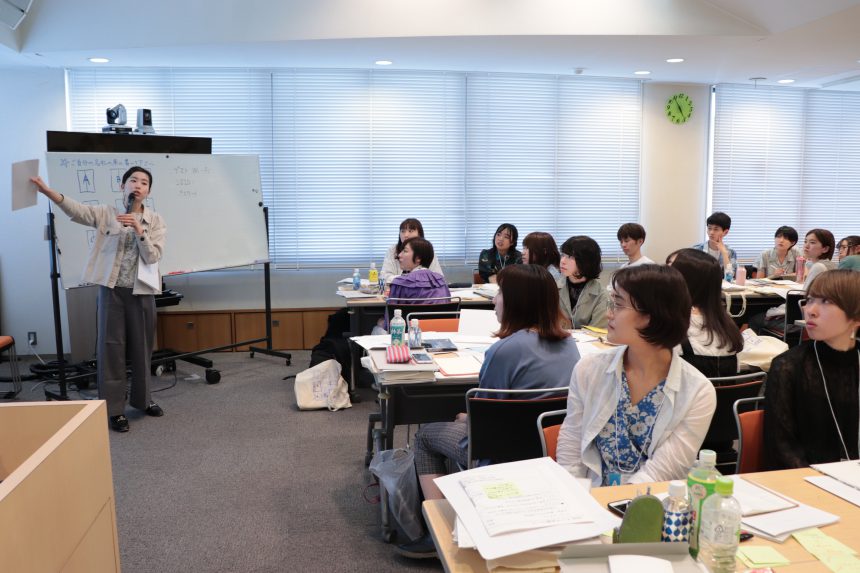
The members' presentations were full of unique ideas, such as "I want to create a zine that focuses on the scales of fonts," "I want to convey the warmth hidden in fonts," "I want people to notice the charm of letters when they see them, rather than just read them," "I want to increase the number of people who are aware of the functionality and design of fonts," "I want to express the appeal of fonts that you see on the streets," "I want to convey the fun of fonts through word play," "I want to introduce fonts as art," and "I want to dig deep into the details of letters."
At the end of the general review, Moripass Department Manager Sakai gave some advice.
"I'm looking forward to seeing what kind of appeal each team will create with their zine. We'll have them finish a prototype by the second meeting. Please meet at least once or twice to work on it, and if you have any problems, please feel free to consult your advisor or manager."
The second meeting was held on July 28th. The prototype was unveiled, followed by a tour of Hokaze's factory and a seminar. Activities will heat up over the next two months as we approach the unveiling of the completed product!

